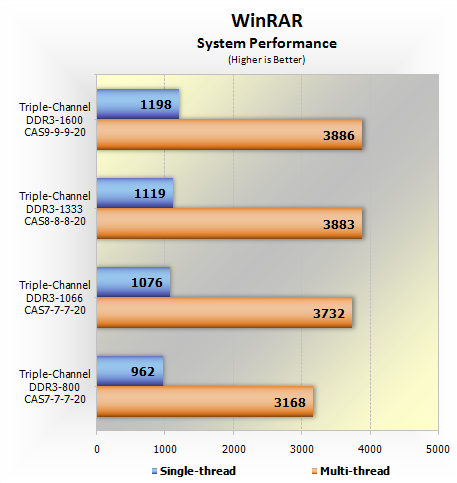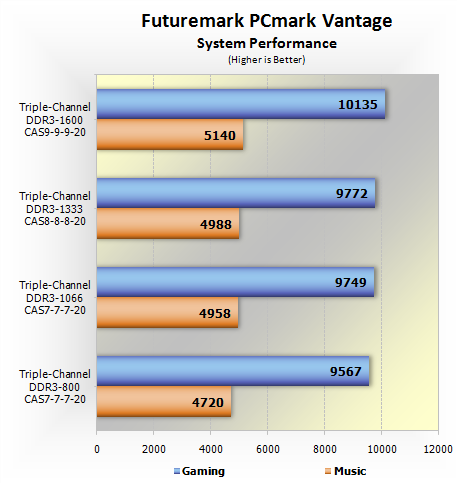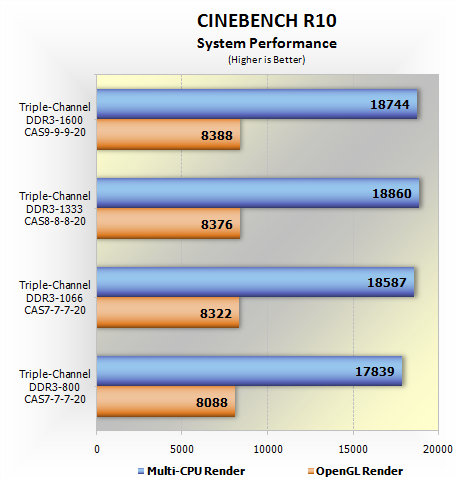General Performance: Synthetic

When clocking the DDR3 modules at just 800MHz the Core i7 processor is not able to perform anywhere near its full potential as the 1066MHz memory configuration delivered 18% more performance in the multi-thread test.
Then when going from 1066MHz to 1333MHz we saw a more modest 4% increase, while there was no real difference to talk about between the 1333MHz and 1600MHz configurations.

The PCmark Vantage performance trends are a little different. The 1600MHz memory, for example, delivered 4% more performance in the gaming test compared to the 1333MHz memory. The improvements between each memory configuration were minimal but still incremental as speeds went up.

The CINEBENCH R10 performance shows meager performance gains for the OpenGL rendering test, while the DDR3-1333 configuration delivered the best multi-CPU rendering result. The DDR3-1600 and 1066 configurations were only slightly slower, and it appeared that the memory frequency had little impact in this test.